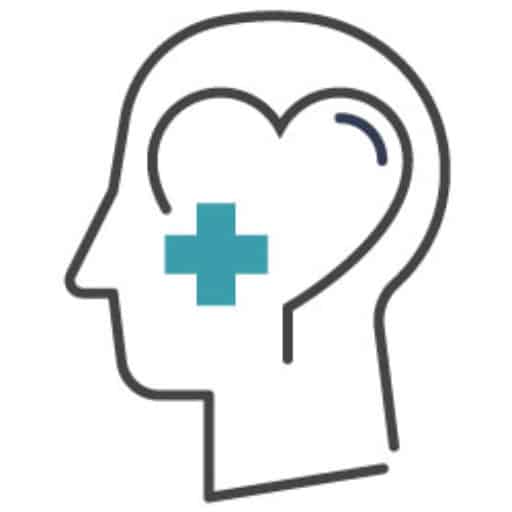If you’re familiar with holistic wellness, you might recognize the term “somatic.” First coined in the 1970s, somatics are practices that regulate the body by facilitating a mind-body connection. Somatic meditation and somatic exercises are just two of the forms.
While somatic meditation and exercises are based on the same principle, they have their differences. Understanding each practice can help you determine the best way to incorporate somatics into your daily routine. Here’s what you need to know about somatic exercises and meditation.
Understanding Somatic Wellness
All somatic techniques are designed with a single goal in mind: to promote bodily awareness. This is achieved using a unique combination of somatic relaxation and gentle movement. When used consistently, this can strengthen a person’s mind-body connection.
But what makes this connection so important? It’s thought that having a unified mind and body can help you pinpoint areas of imbalance. In theory, this makes it easier to pick up on the signals your body sends during times of pain or discomfort.
This can be useful when examining the way your body responds to experiences, particularly negative ones. If you’ve had a traumatic experience, your body may hold on to the negativity it absorbed during that time. The natural, calming movement of somatic practices can help you expel this energy and move toward wellness.
The same is true for those who suffer from a mental illness. The nature of somatic practices is ideal for those in need of a way to calm their mind and body. By promoting balance, somatics can help you regulate yourself in times of distress.
The Benefits of Somatic Exercises
Somatic exercises essentially consist of movement for its own sake. Unlike other exercises intended to strengthen muscles or burn calories, somatic exercise uses the sensation of each movement to calm and soothe. Focusing on the inner experience as you move is what works to connect your emotional self with your physical one.
As you perform somatic exercises, you’ll start to learn more about your body and how it moves. This can have several benefits.
For one, those who practice somatic exercises regularly tend to see an increase in emotional awareness. A heightened awareness of your movements can help you alter your body language to avoid postures that harbor negativity. This can reduce the frequency of negative emotions you experience throughout the day.
Somatic exercises can also minimize physical pain. These routines are inherently gentle, and consistent practice can reduce both chronic pain and fatigue, as determined in a 2013 study. Somatic exercise also facilitates improved bodily awareness, which can keep you from using postures that elicit pain.
One 2017 study suggests that somatic exercise can also improve balance and coordination, particularly in older adults. Over time, this can lead to a significant increase in a person’s range of mobility.
The Benefits of Somatic Meditation
Somatic meditation is similar to standard meditation practices, which focus on mindfulness and relaxation. A somatic technique differs from these mainly due to the attention it pays to the body.
The purpose of somatic meditation is to tap into the self-awareness that, in theory, already exists within the body. This is achieved by meditating with an intentional focus on your body and the sensations it experiences.
Meditation on its own has a variety of benefits. Perks like stress release and enhanced focus are part of why the practice has grown so popular, with the number of adults who meditate regularly tripling between 2012 and 2017. But somatic meditation has some unique benefits of its own.
Because somatic meditation is grounded in the body rather than the mind, it can help you increase your sense of physical awareness. This makes it easier to practice good posture and to move mindfully.
A mindfulness-based alignment of the body can also help you feel more comfortable in your own skin. Because your body is thought to maintain its own “memory” of traumatic events, soma meditation dedicated to the mind-body connection can help relieve some of this pent-up negativity.
Somatic Exercises vs. Meditation: Key Differences
Though somatic wellness can be applied to both exercise and meditation, the practices aren’t interchangeable. While both focus on enhancing the mind-body connection, their differences lead them to produce different results.
One of the biggest differences between somatic exercises and meditation is the role of movement. Somatic exercise mainly consists of slow, gentle movements similar to those of yoga or tai chi. Meditation typically requires stillness, save for the movement of the body with the breath.
Additionally, while both types of somatic wellness could be considered therapy, they each approach healing in a different way. Somatic exercises can be used to improve the body’s physical condition, minimizing pain while promoting balance and mobility. Somatic meditation instead relaxes the body by relieving the mind of its negative associations, thus making space for you to heal.
The Complementary Nature of Somatic Exercises and Meditation
The differences between somatic exercises and meditation are precisely what make them work so well together. If you’ve endured a traumatic experience, strengthening the mind-body connection is best done by working through both ends at once.
The same is true if you’re suffering from a mental illness. Practicing somatic exercises can help you develop bodily awareness that minimizes negativity while reducing physical pain and fatigue. At the same time, somatic meditation can help you cultivate mindfulness and eliminate the negative energy stored in your memory.
Somatic wellness in any form can benefit those in need of a stronger mind-body connection. But for the best results, meditation and exercises are best used in tandem.
Somatic exercises and meditation can be powerful tools for strengthening your mind-body connection. But sometimes they aren’t enough to mitigate the effects of anxiety and depression. If you need some extra support, Restore Mental Health can help. Contact us today to get started.



